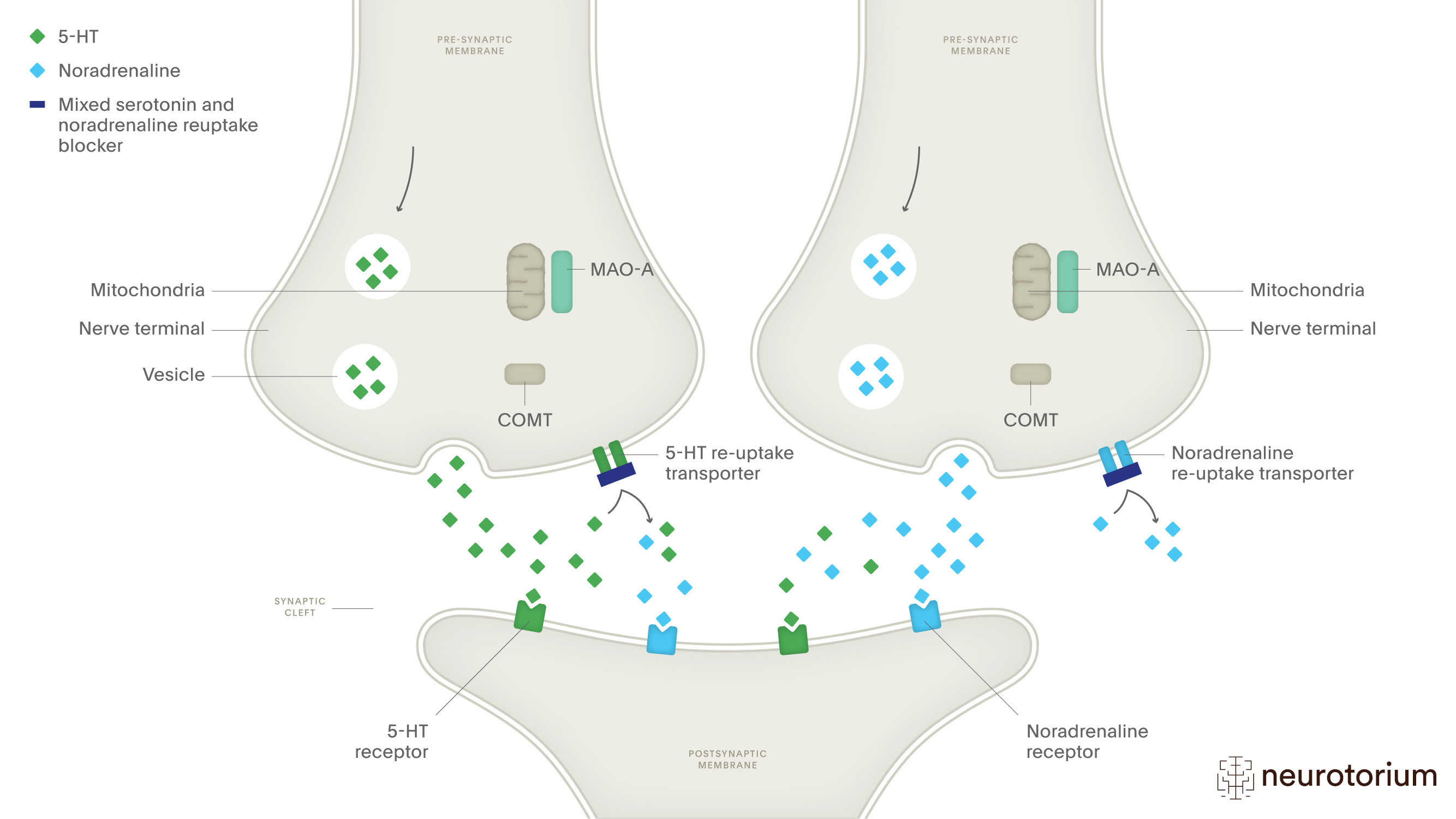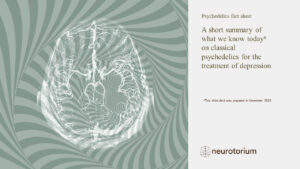Depression is associated with reduced levels of the monoamines in the brain, such as 5-HT. The selective 5-HT and noradrenaline re-uptake inhibitors (SNRIs) are thought to restore the levels of 5-HT and noradrenaline in the synaptic cleft by binding at their re-uptake transporters preventing the re-uptake and subsequent degradation of 5-HT and noradrenaline. This re-uptake blockade leads to the accumulation of monoamines in the synaptic cleft and the concentration returns to within the normal range. Selective 5-HT and noradrenaline re-uptake inhibitors have demonstrated clinical efficacy in the treatment of depression In the presence of the SNRIs, small amounts of 5-HT and noradrenaline continue to be degraded in the synaptic cleft.
Click here: Explore the use of SNRIs in depression treatment





